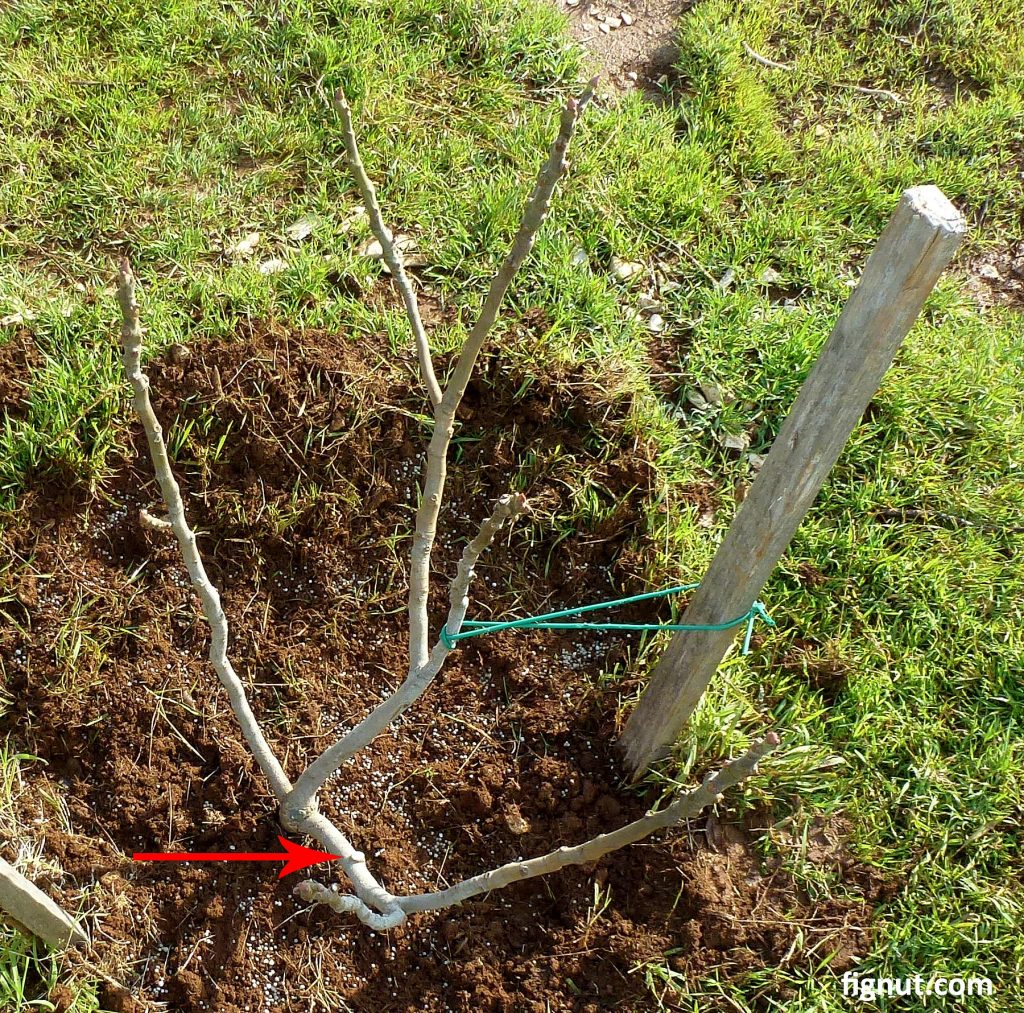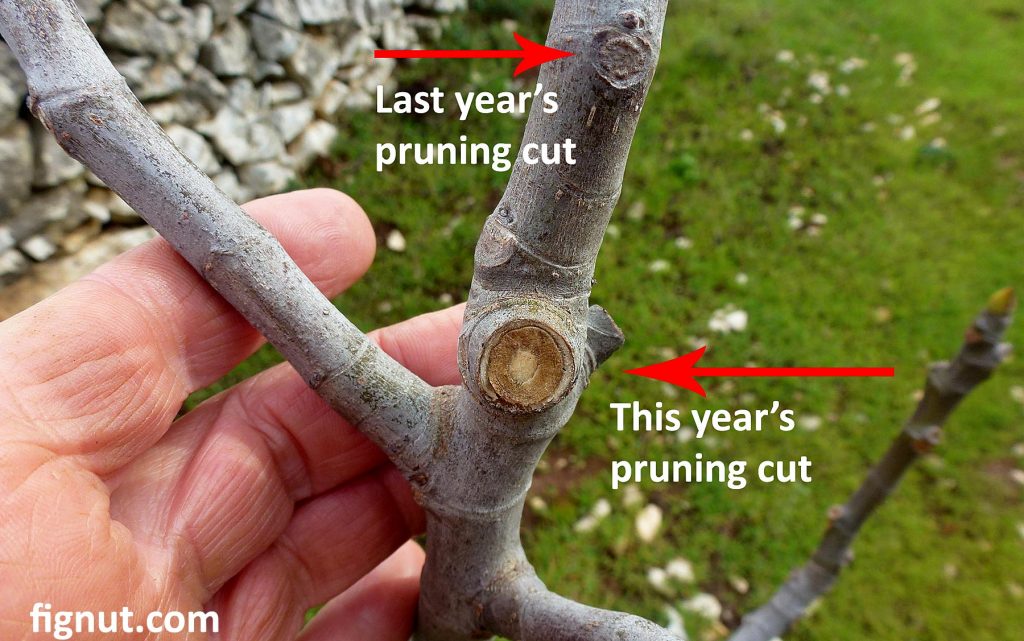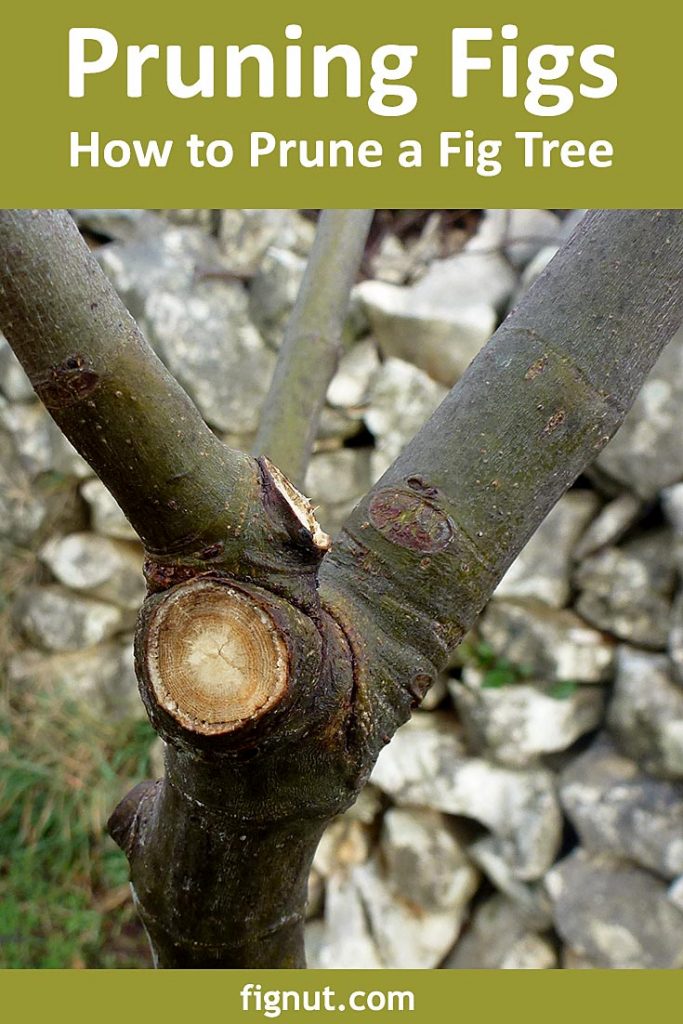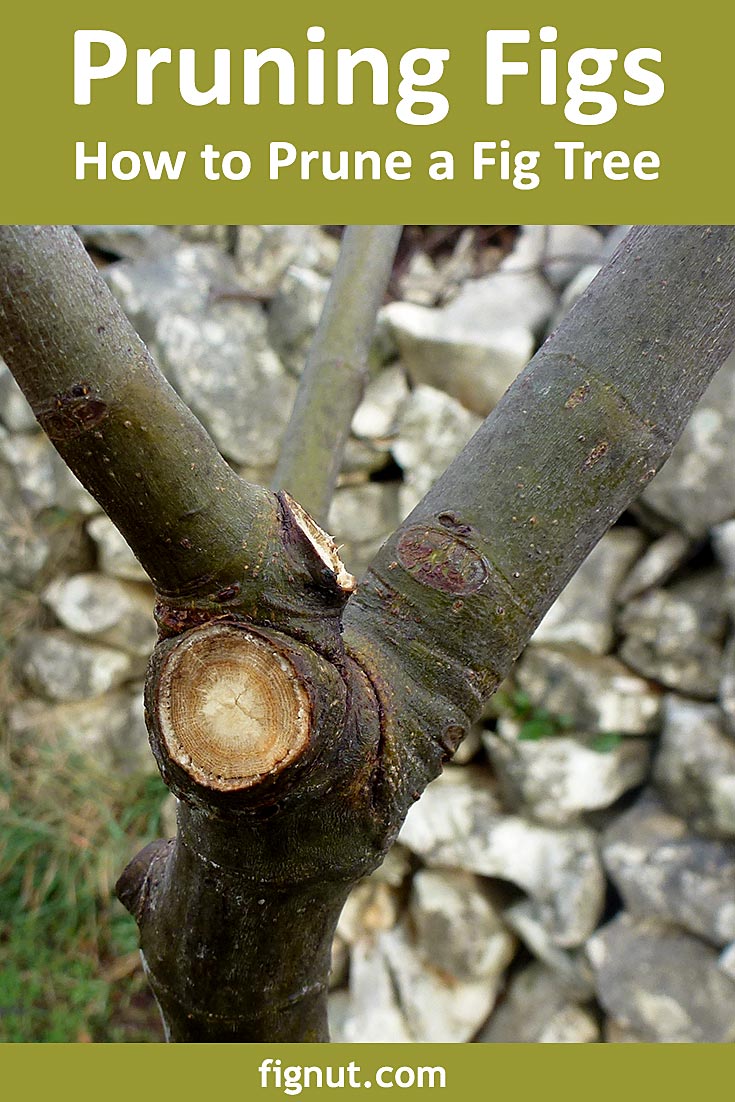Pruning fig trees is an essential part of looking after the tree. It should be done at least once a year, in the dormant season (winter) but it is recommended by experts to prune the tree twice a year, the second time in summer.
If you don’t prune them regularly, the trees will not develop a nice crown, will be prone to diseases, and will produce fewer fruits. In this article, I will show you when and how to prune fig trees in winter and summer and in the first, second, and further years, as well as which tools to use for the best results.

Table of Contents
When to Prune Figs
The fig tree should be pruned twice a year. A combination of winter and summer pruning is the most effective.
Winter Pruning
Winter pruning is done usually in late January or February (depending on the climate) when the fig tree is in the dormant phase. It is the safest time to prune the tree as it has a low amount of white milky fluid (latex) spread in branches. If you start with pruning while the milky fluid is still in branches (you will notice it as it bleeds out of cuts), it is a good idea to stop and wait a bit longer (a week or two longer). This is how to do it, in three steps:
Step 1 – Cleaning the Tree
Cleaning the tree is the first pruning step and should include:
- Remove all branches that have been damaged, broken, or have dried out
- Cut off all new shoots that grow directly from the tree trunk
- Prune all branches that bend towards the center of the tree crown
Step 2 – Thinning
The aim of thinning is to allow light and air to reach all leaves in all parts of the crown. Thinning reduces the spread of diseases and the spread of harmful insects.
- Remove branches that grow down
- Cut off branches that overlap with others
- Prune the crown as thin as possible to maintain an even foliage density in all parts of the crown.
- Where the branches fork, leave the healthiest one that spreads away from the trunk and cut out the rest leaving the angle between the two branches on about 60 degrees. If you leave the angle lower than this, there will not be enough airflow nor sunlight during the vegetation. The space around each branch should be at least 20 cm or more. It is important that each branch has enough air flow and space to develop.
- Remove all branches that are longer than 35 cm and has no side or forked branches.
Step 3 – Trimming And Shaping
This is the last step, an easy to do one as the aim is just to gently style, trim, and shape the crown to keep it preferably symmetrical. Start from the outside and cut towards the trunk. The goal of this step is to create thicker and shorter branches. Prune about 1/3 of last year’s growth on about 1 cm above the chosen bud.
Pruning also depends of how old is your tree.
First Year Pruning
First-year pruning is made in order to form a tree crown. Remove just one or two branches that are growing towards the center of the crown. Start with forming a tree crown in a vase shape. See the below photo where I pruned just one branch, the one that was growing toward the center of the crown:

Second Year Pruning
In its second year, trees are just a bit larger, still not mature trees. In this year, in the winter, clean all dried branches, gently thin, trim, and shape further very carefully as in the first year.
Third Year and Further Pruning
In its third year and further, the tree is already mature and is hopefully producing some fruits that ripe into a soft, sweet and brightly coloured figs that are delicious to eat or dry. This is the time when thorough winter and summer pruning should start and from now on, in the following years, prune the trees the way I described above.
Here are some photos of my fig trees that I pruned recently – the three-year-old tree and one-year-old tree. As you can see in the photos, the older and larger trees needed more pruning than the smaller and younger ones.

Here are my last year’s and this year’s pruning cuts – as you can see the last year’s cut is already healed and safely covered by bark. This year’s cut is slowly turning brown and will hopefully heal too.

Some of my trees will also need bending meaning pushing the branches towards the right angle in relation to the trunk. I plan to do it this year and will use water bottles as weights to gently bend the branches towards the right angle ( about 60-70 degrees).
Summer Pruning
Summer or green pruning, in the late spring and summer, removes water sprouts (water shoots) that exhaust (deplete) the tree and actually do not bear any fruit. Check if any of these are growing on your tree and cut them off as soon as you notice them. Also, remove any leaves that are touching the others in order to control diseases and pests. Summer pruning should be quick and gentle where you will remove leaves or branches that are absolutely essential to remove. Leave hard pruning for the dormant period.
Pruning Tools
You don’t need a lot or any expensive tools to prune – use garden scissors (pruning shears) for smaller branches and garden loppers for larger branches. You can also use a pruning saw if you need to remove a very thick branch but their cut can be not very clean. The best option for pruning thicker branches is the bypass loppers which are making very good and clean cuts.

Video
In this video I am winter pruning my fig trees, removing some dry branches, inward growing shoots, and shoots that grow directly from the tree trunk – have a look:
Important things to remember when pruning
- Make sure your pruning shears or garden loppers are very sharp. You can easily sharpen them yourself as you would sharpen any kitchen knife.
- To avoid spreading any disease, make sure you disinfect the pruning shears and garden loppers with alcohol.
- Properly dispose of pruned branches to prevent the spread of disease to healthy trees.
- If you prune a branch that is thicker than 4 cm, coat the cut with grafting wax. This will prevent possible disease.
- As soon as you finish with pruning, apply winter treatment by spraying your trees with oil sprays in order to control diseases and pests. Add some fertilizer soon after.
What happens if you don’t prune fig trees
Pruning fig trees is an essential part of looking after the tree. If you don’t prune it, the tree will grow irregularly. If you don’t cut them back annually you’ll end up a less productive tree, with fewer fruits and shabby foliage. Unpruned figs also have a shorter lifespan.





